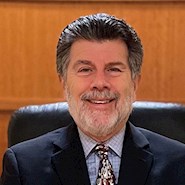By Kenneth H. Rosenfield, P.E., ENV SP, F.ASCE
Welcome to the second installment of the three-part series aimed at equipping you with the tools to enhance your public speaking skills. With over 40 years of experience in the public and private sector, I have gathered valuable insights to benefit those seeking to hone this important skill. The first article in the series, “7 tips to help you prepare to speak publicly,” focused on how to properly prepare for public speaking.
This installment focuses on common speaking errors to avoid.
By mastering public speaking skills through instruction, practice, and refinement, professionals can excel in conveying their messages, avoiding common speaker errors, overcoming the fear associated with public speaking, and being prepared to handle challenging audiences.
1. Don’t forget to impart meaningful information: The primary objective of your presentation should be to impart information. Your goal should be to ensure the audience hears, comprehends, and relates to the information being communicated.
Your presentation should address all the fundamental questions that pertain to the topic: who, what, when, where, why, and how? These six questions are the same ones you would typically address in a paper written on the subject. Just like in high school English class, answer each question in complete sentences.
2. Don’t speak too quickly: As the speaker, you have the responsibility to avoid being a distraction from the conveyance of the information you are presenting. As you convert your written presentation into spoken words, it needs to be done with clear articulation and suitable intonation. This is accomplished through practice by enunciating each word until they are easy to speak and the combinations of words are fluently spoken. Even if you have a strong accent, following this advice will help the audience hear and understand your message.
It is natural for anyone to occasionally stumble or falter on a spoken word. If that happens, slow down, take a breath, do not get flustered, repeat the correct word, and then move on.
Let me repeat the recommendation to slow the pace of your presentation.
Have a pace of speaking that is comfortable for you, but keep in mind the audience needs time to absorb the information that you already fully understand. Take your time. It may feel as if you are speaking too slowly, but in reality, you are likely providing a beneficial pace for your audience members, allowing them to digest the information.
3. Don’t forget to engage your audience: During your presentation, engage your audience through regular eye contact, scanning the room front to back on a repeated basis. Use supportive hand gestures and vary the volume of your voice to emphasize important points. Remember to smile, and if you are using a lavalier microphone, consider walking around the front of the room, or stage, to foster engagement with the audience.
Maintain a captivating flow throughout your presentation. If employing PowerPoint slides, refer to them but do not read the slides; your audience knows how to read! It is best to use an outline format on your PowerPoint to highlight important information and keep the slide content simple and to the point. Stay on time, show respect to your audience at all times, and have some fun with your presentation.
4. Avoid filler words: Many of us have a natural tendency to fill the space between spoken words with filler words such as “uh,” “um,” or “ah.” Avoid starting any sentences with the words “honestly” or “truthfully” or any variation thereof. This implies to the audience that everything you said just prior to that sentence was either dishonest or false.
Fillers can be very distracting, and their use is often a habit that we do not recognize in ourselves. Be mindful of your use of these vocalizations.
The best approach to avoid filler words is to incorporate a silent pause between words, sentences, or the moments when you are gathering your thoughts. It is difficult to break this habit and learn to replace these fillers with a pause, but once mastered, you will be a better speaker. In my experience, the audience will not view your pauses as anything other than a natural speech pattern and will not, in turn, be distracted from your message. The pause is your friend!
5. Avoid unfamiliar jargon: It is also crucial to avoid potentially unfamiliar words, technical language, or regional colloquialisms or phrases because they can hinder your audience from fully understanding your presentation.
In addition, never refer to your audience as “you guys” or other similar group identifiers. Such phrases can be viewed as disrespectful and place you apart from the audience to which you are trying to show respect.
6. Avoid nervous hand gestures: I have previously mentioned the positive use of your hands and arms for gestures that emphasize points of information. However, be careful of how you use your arms and hands. You want to convey openness, confidence, and trustworthiness in your presentation. Hence, you should not cross your arms over your chest or clasp your hands in front of or behind you, you should not point your fingers, and care should be taken to not frequently touch any part of your face or head, all of which are distractions.
When not gesturing, relax your arms and hands and let them hang by your side. This is a natural position that sometimes feels odd, but it will be perceived as a confident person showing respect to the audience.
-----
In the final article of this three-part series to enhance your public speaking prowess, we will delve into the techniques employed to respond to audience questions, including those that are challenging, difficult, or rude.
This series is available in partnership with the 2023 ASCE Convention (Chicago, Oct. 18-21), where Kenneth H. Rosenfield will present on public speaking. Register for the convention today.
This article is published by Civil Engineering Online.



